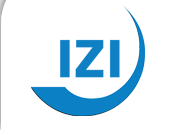 |
 |
|||||||||||||

|
In a globalised world where news reports are all-pervasive, wars and natural and technological disasters form part of the news coverage. They unsettle us and show that things we take for granted – such as security in terms of our lives and property – may be in danger. What does this mean for children? News coverage, especially for adults, relies on powerful images to attract attention, and, to a certain extent, it evokes emotions and dramatises situations. Children watch news coverage and get an idea of the events. Research shows that news can frighten children and that political discourses can influence their world view. We therefore have a high degree of responsibility to ensure that we offer appropriate news coverage, especially for children. But what does that mean in practice? The IZI explores these and other questions within this research focus.
How Children and Adolescents Understand the Issue of Refugees The collaborative study by the International Central Institute for Youth and Educational Television (IZI) and the Media Authority of North Rhine Westphalia (LfM) represents the first comprehensive series of studies on the subject of adolescents and refugees. As part of this, in March (n= 741) and September (n= 1,448) 2016 a representative sample of 6 to 19 year-olds were asked about their knowledge and attitudes towards refugees, and relations between these and their media usage were identified. In the qualitative part, 147 6 to 11 year-olds were interviewed in questionnaire-supported interviews with both open and standardised questions and creative components, and 166 12 to 18 year-olds filled in a corresponding age-appropriate questionnaire. The results of the study series are published in TelevIZIon 30/2017/E “Refugees, Integration, and the Media“
Children's Perception of the Natural and Technological Disasters in Fukushima (2011) In March 2011 the disasters in Japan – an earthquake, a tsunami, and a serious accident in a nuclear power plant – dominated the news worldwide. The IZI investigated how children (five to 13 years old) perceived the disasters, how children’s television worldwide handled this subject, and what children would like to see in a children’s programme on this subject.
Children Watch the War – Children's Perspective on the War in Iraq and the Television News Coverage of it One subject dominated the media for weeks: the war in Iraq. The reports show bombardments, injured and dead people. Children have their own perspective on these images and the events. They have concerns, questions, a need for information, and the need to communicate their perspective on things and their feelings. The International Central Institute for Youth and Educational Television (IZI) in collaboration with international academics is currently investigating what characterises this perspective and how children’s television handles the problem. |
|||||||||||||
